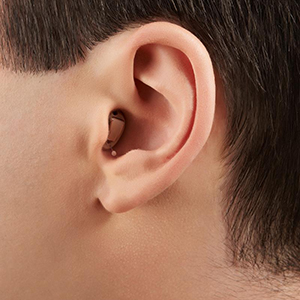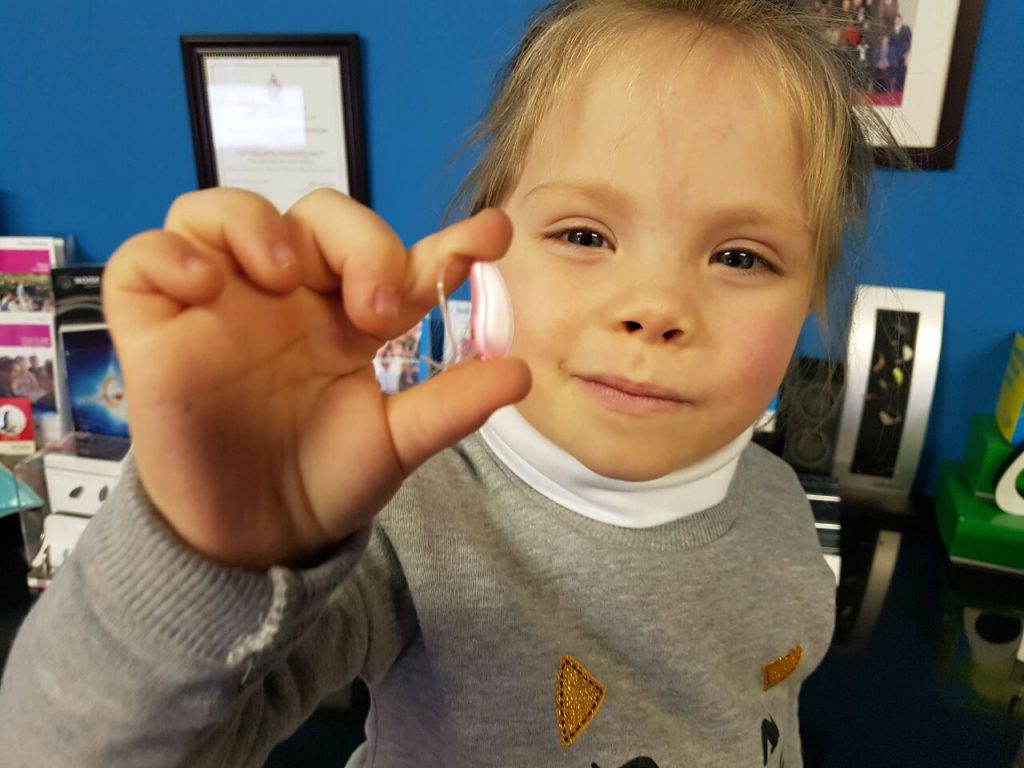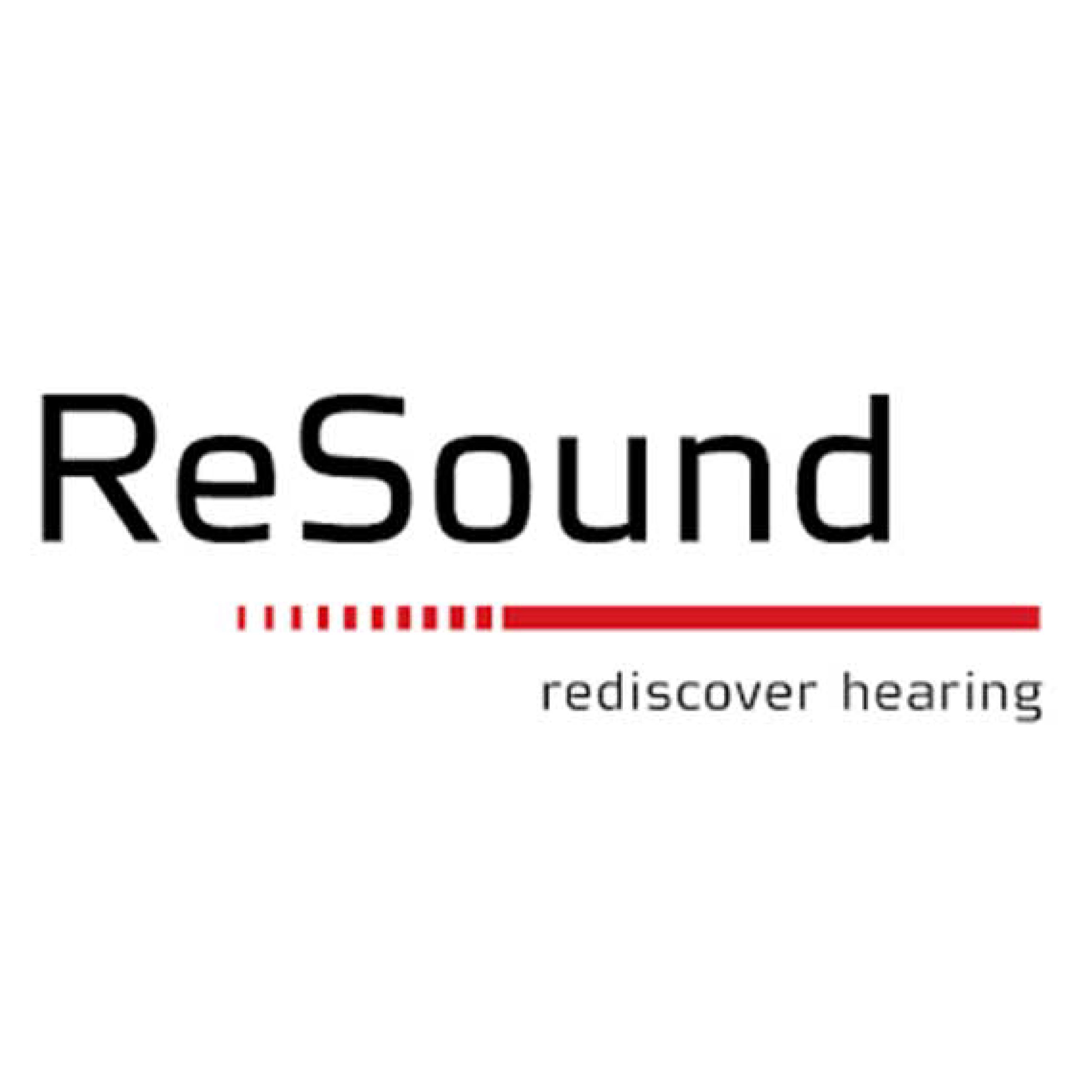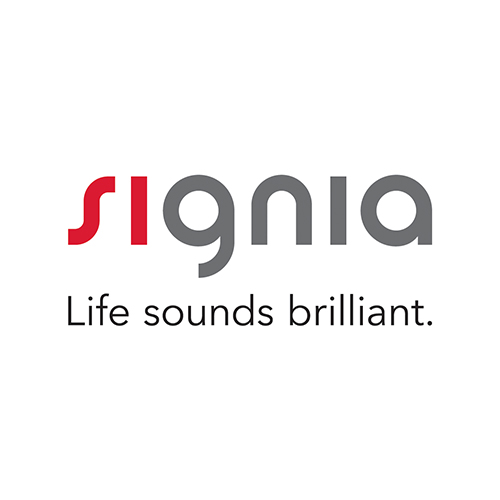Hearing Aid Supply, Fitting, Fine tuning & Verification
In the case that you have been diagnosed with a hearing loss that cannot be medically treated, your audiologist will recommend that you are fitted with hearing aids. Spectrum Hearing pride themselves in the fact that they have extensive knowledge of a range of different hearing aid brands and also provide a wide variety of hearing aid models and brands. We firmly believe that it is in the best interest of the patient that we as audiologists are informed and educated in a range of different brands, since individual hearing needs, lifestyle and preferences should be accommodated in the choice of hearing amplification. It is for this reason that we go to great lengths and spend many hours on training in order to stay abreast of the latest technology in all hearing aids on the market.
Read more...The hearing aid options will be discussed with you, in depth (If you so wish) and after you have discussed the different technology options available and made an informed decision, your hearing aids will be ordered and fitted as soon as delivered. We strongly recommend that once you have been fitted with a hearing aid you should come back for a follow up session. This follow up session is needed so that you can give us some feedback on how you are doing with your hearing aids and to determine the need for any fine tunings and adjustments to your hearing aids.
For this reason we include a number of free follow-up sessions within a certain time.
Scroll down for some answers to your questions on hearing aids!
Common questions about hearing aids
A hearing aid is a small electronic device that you wear behind or inside of your ear. It is designed to amplify the sounds that you are missing so that you can listen, communicate, and participate more fully in daily activities. It is programmed by an audiologist through advanced software in order to ensure that it is correctly set up for you specific hearing. A hearing aid can help people hear more in both quiet and noisy situations. However, only about one out of five people who would benefit from a hearing aid actually uses one.
A hearing aid has four basic parts: a microphone, microchip, amplifier, and speaker. The hearing aid receives sound through a microphone, sound is analysed by the microchip at tremendous speeds (some can make up to 600 million calculations per second). The amplifier receives this processed sound, increases the power of the signals and then sends them to the ear through a speaker.
Hearing aids are primarily useful in improving the hearing and speech comprehension of people who have hearing loss that results from damage to the small sensory cells in the inner ear, called hair cells. This type of hearing loss is called sensorineural hearing loss. The damage can occur as a result of disease, aging, or injury from noise or certain medicines. A hearing aid magnifies sound vibrations entering the ear. Surviving hair cells detect the larger vibrations and convert them into neural signals that are passed along to the brain. The greater the damage to a person’s hair cells, the more severe the hearing loss, and the greater the hearing aid amplification needed to make up the difference. However, there are practical limits to the amount of amplification a hearing aid can provide. In addition, if the inner ear is too damaged, even large vibrations will not be converted into neural signals. In this situation, a hearing aid would be ineffective.
If you think you might have hearing loss and could benefit from a hearing aid visit your audiologist. An audiologist is a hearing health professional who can identify and measure hearing loss through a hearing assessment to assess the type and degree of loss. If you need to know more about a hearing test click here, or you are welcome to take our online hearing screening test here. *Please note that this is only a screening test and do not replace the diagnostic hearing assessment the audiologist conduct*
Two main types of hearing aids are available BTE (Behind-the-ear) or custom (In-the-ear) products:
BTE (Behind-the-ear)

Custom (In-the-ear)

The choice between behind-the-ear instrument vs a custom instrument is a decision that should be made in collaboration with your audiologist.
The advantages and disadvantages of each should be considered as well as individual factors such as:
Hearing aids are generally covered or partially covered by medical aids in South Africa, although benefits differ depending on the benefit level you are prescribed to. The initial hearing test is usually covered by most medical aids with “day-to-day” benefits. Hearing aids are often covered from a separate “appliances” fund, whilst others use the benefit from the savings fund. It is best to contact your audiologist to explain the procedure with your medical aid. In the absence of hearing aid benefits through your medical aid, or in instances where they only partially cover hearing aids we also have a hearing aid on contract option available. This is very similar to a cell phone contract where you pay a monthly premium for a contract period and receive the devices. After the contract period you have the option to upgrade and receive new hearing instruments. If you are interested in this option, please feel free to contact us!
Hearing aids are available in different technology levels – it is the technology inside the hearing aid that determines the price of the hearing aid, the design or style of the hearing aid has a lesser influence. Your communication needs and lifestyle determines the technology level you need, and should be considered in conjunction with your audiologist.
The features and technology mentioned includes these factors amongst others:
- Sound quality
- Reduction of background noise
- Preservation of speech in background noise
The good news is that there are affordable options available! Good hearing aid features have filtered down to the bottom price range which enables you to buy a good quality hearing aid even with a restricted budget. We also have a hearing aid on contract option available. This is very similar to a cell phone contract where you pay a monthly premium for a contract period and receive the devices. After the contract period you have the option to upgrade and receive new hearing instruments. This ensures that you can afford the instruments that you need. If you are interested in this option, please feel free to contact us!
Hearing aids work differently depending on the electronics used. The two main types of electronics are analog and digital. Analog hearing aids are not commonly used anymore since digital hearing aids are much more advanced and provide improved speech clarity and comfort. Furthermore, there are some differences in the style of hearing instruments, and there are some differences in how they function.
The hearing aids that will work best for you depend on the type and severity of your hearing loss. If you have a hearing loss in both of your ears, two hearing aids are generally recommended because two aids provide a more natural signal to the brain. Hearing in both ears also will help you understand speech and locate where the sound is coming from. You and your audiologist should select a hearing aid that best suits your needs and lifestyle. Price is also a key consideration. Similar to other equipment purchases, style and features affect cost. However, don’t use price alone to determine the best hearing aid for you. Just because one hearing aid is more expensive than another does not necessarily mean that it will better suit your needs. This as mentioned above is a decision that your audiologist can guide you in. With continuous use a hearing aid will increase your awareness of sounds and their sources. You will want to wear your hearing aid regularly, so select one that is convenient and easy for you to use. Other functionality that needs to be considered is compatibility with other electronic devices such as your smartphone, rechargeability, remote fine tuning capabilities and many more. Considerations also include parts or services covered by the warranty, estimated schedule and costs for maintenance and repair, options and upgrade opportunities, and the hearing aid company’s reputation for quality and customer service.
Hearing aids take time and patience to use successfully. Wearing your aids frequently will help you adjust to them, we recommend at least 10 hours use per day. You should become familiar with your hearing aids, practice putting in and taking out the hearing aids, cleaning it, identifying right and left hearing aids, and replacing the batteries. Test it in listening environments where you have problems with hearing, learn to adjust the aid’s volume (if necessary). Most importantly, make notes of challenges you face and questions you have, attend our follow up appointments and work with your audiologist until you are comfortable and satisfied. Remember – if we don’t see you and know of your challenges, we cannot help with them!
Possible challenges you could experience while adjusting to your hearing aid:
- Hearing aid can feel a bit strange initially. Some individuals may find a hearing aid to be slightly uncomfortable at first. This is only temporary – soon you will not be aware of the hearing aid in your ear and might forget that you gave it on. You might even accidentally jump into the shower with it!
- Your own voice could sound strange. The phenomenon that causes a hearing aid user’s voice to sound louder is called the occlusion effect, and it is very common for new hearing aid users. This is often something that can be corrected with some adjustments – contact us! It is also possible that within a few days your voice will start sounding more natural, so give it some time!
- I get feedback or a whistling sound from my hearing aid. A whistling sound can be caused by a hearing aid that does not fit well or work well or is clogged by earwax or fluid. Make sure the hearing aid is clean, make sure that you have inserted it well into the ear – if this does not fix the problem, please contact us for adjustments.
- I hear background noise. A hearing aid does not completely separate the sounds you want to hear from the ones you do not want to hear. In some cases however, the hearing aid may need to be adjusted. Please contact us!
- I am struggling to hear on the telephone. Some people who wear hearing aids or have implanted hearing devices experience problems with hearing on the phone. Firstly one should ensure that the phone is positioned correctly – remember that the sound does not enter the ear in exactly the same way as it used to – ask us what the correct way is! Depending on the severity of your hearing loss phone calls might still be a challenge, fortunately we have a variety of solutions available for phone calls! We can assist you with the appropriate advice.
Proper maintenance and care will extend the life of your hearing aid. Make it a habit to:
- Keep hearing aids away from heat and moisture.
- Store hearing aids as instructed.
- Clean hearing aids as instructed. Earwax and ear drainage can damage a hearing aid.
- Avoid using hairspray or other hair care products while wearing hearing aids.
- Turn off hearing aids when they are not in use.
- Keep replacement batteries and small hearing aids away from children and pets.
- We recommend an annual service for your hearing aids, this will ensure extended lifespan
Hearing aid manufacturers invest billions of dollars annually into research and development – and the products shows the improvement in technology. There is significant improvement in sound quality, features and hearing aid ability with every launch of a new range of instruments. Researchers are continuously studying how hearing aids can amplify speech to maximise understanding of speech whilst minimising noise and increasing comfort for the most natural sounding hearing aid. I can with confidence say that technology improves almost daily – and it is you that benefit from these improvements!
What to know before you buy a hearing aid
![]() Which hearing aid technology level will be most beneficial to my needs and lifestyle?
Which hearing aid technology level will be most beneficial to my needs and lifestyle?
![]() If I choose different hearing aids than the ones the audiologist recommended, what effect would that have on me?
If I choose different hearing aids than the ones the audiologist recommended, what effect would that have on me?
![]() What is the total cost of the hearing aid is the ear mould, the fitting, adjustments, follow ups, warranties, services etc?
What is the total cost of the hearing aid is the ear mould, the fitting, adjustments, follow ups, warranties, services etc?
![]() How long is the warranty? Can it be extended & what does it cover?
How long is the warranty? Can it be extended & what does it cover?
![]() Is there any other hidden costs or maintenance cost?
Is there any other hidden costs or maintenance cost?
![]() How frequently should I visit my audiologist after getting my hearing aids?
How frequently should I visit my audiologist after getting my hearing aids?
![]() How long will my battery last & how much does hearing aid batteries cost.
How long will my battery last & how much does hearing aid batteries cost.
![]() Does the benefit of having better features outweigh higher costs?
Does the benefit of having better features outweigh higher costs?
![]() Can the audiologist do fine tuning on the hearing aid and what is the cost involved in this process?
Can the audiologist do fine tuning on the hearing aid and what is the cost involved in this process?
![]() What if my hearing deteriorates?
What if my hearing deteriorates?
![]() Will I be able to get loan hearing aids when mine are sent for service or repairs?
Will I be able to get loan hearing aids when mine are sent for service or repairs?
![]() Are the hearing aids potentially compatible with my cell phone or other electronic devices?
Are the hearing aids potentially compatible with my cell phone or other electronic devices?
![]() Is the hearing aid brand a reputable brand?
Is the hearing aid brand a reputable brand?
![]() If I buy these hearing aids – will another audiologist be able to assist me with adjustments in future if necessary?
If I buy these hearing aids – will another audiologist be able to assist me with adjustments in future if necessary?
Hearing Aid Styles
Accessories
Hearing aid accessories are optional extras which enhance and enrich your hearing aid experience. Fantastic advances in technology have enabled companies to provide the hearing aid user accessories to use with their hearing aids in order to enrich the hearing experience in different situations.
Remote Controls

Remote control units are typically used to make minor adjustments to the hearing aid such as volume and listening programs. These functions were previously only available on the hearing aid itself. Remote control units enables you to adjust your hearing aid easily and discreetly.
Remote Microphones
 Devices are available acting as remote microphones which stream sound directly to your hearing aid. If you’re having a conversation in a restaurant, the microphone can be placed in front of your partner and the conversation will be heard clearly. These systems maximises speech to noise ratio.
Devices are available acting as remote microphones which stream sound directly to your hearing aid. If you’re having a conversation in a restaurant, the microphone can be placed in front of your partner and the conversation will be heard clearly. These systems maximises speech to noise ratio.
Bluetooth Devices

Bluetooth devices connect your hearing aid to audio/sound sources. Sound is sent directly through the hearing aid enabling you to hear these sounds clearly. These devices can also be used as remote controls. Cell phones, TV’s, Computers, Tablets and Mp3 Players are compatible with Bluetooth units.
FM System

These systems are used by hard of hearing children as assistive device together with their hearing aid. This device increases the signal to noise ratio. In some instances it’s used by adults and children with normal hearing and auditory processing difficulties.
Charger
 Traditionally, hearing aids work with disposable Zinc air batteries. The latest technology allows you to recharge your hearing aid, using a specific charger manufactured for your hearing aids.
Traditionally, hearing aids work with disposable Zinc air batteries. The latest technology allows you to recharge your hearing aid, using a specific charger manufactured for your hearing aids.
Applications on Smartphones & Tablets

 Certain applications have been developed that connects with your hearing aid directly in the absence of a middle Bluetooth device. These applications allow the user to adjust volume, programs, take & make phone calls and listen to music directly from their smartphone or tablet.
Certain applications have been developed that connects with your hearing aid directly in the absence of a middle Bluetooth device. These applications allow the user to adjust volume, programs, take & make phone calls and listen to music directly from their smartphone or tablet.
Modern features of hearing aids – What does it mean for me?
Wireless & bluetooth connectivity
The process and journey with hearing aids
What can you expect after making the decision to get hearing aids?
After deciding on hearing aids with your audiologist, she will place the order for the hearing aids. As soon as we have received your instruments (in some cases we might have the hearing aids the next day!), we will contact you for an appointment. The fitting appointment is scheduled for about 45 -60 minutes.
The fitting appointment will include the following aspects:
![]() We will ensure that the hearing aid fits snuggly and comfortably in or on your ear. During this process the hearing aids will be connected to the computer, either through the use of cables or wirelessly through the use of bluetooth or similar connections. The computer will by this time have your hearing assessment result (audiogram) in the appropriate software and the computer will prescribe recommended settings for your individual hearing loss.
We will ensure that the hearing aid fits snuggly and comfortably in or on your ear. During this process the hearing aids will be connected to the computer, either through the use of cables or wirelessly through the use of bluetooth or similar connections. The computer will by this time have your hearing assessment result (audiogram) in the appropriate software and the computer will prescribe recommended settings for your individual hearing loss.
![]() After this has been done – your hearing aid will be switched on! Our favourite part of the day! You will hear that things sound louder and different! I personally love seeing the expression on someone’s face the first time they hear the clock ticking in my office – moments of joy and emotion! After this initial switch on, we usually have a conversation to allow you to listen to what you are hearing. We will ask some questions and in some cases ask you to repeat some words. The purpose of this is to determine whether the settings on the hearing aid are comfortable. It could happen that for instance your own voice sound slightly strange or that sound might echo slightly. Some time is taking to adjust the instruments to a point where they are comfortable. In many cases, especially for individuals using hearing aids for the first time, hearing aids are initially programmed slightly softer than prescribed for comfort purposes. This is also partially the purpose of the follow up appointments – to steadily increase the volume of the hearing aids until the settings are exactly on the prescribed settings.
After this has been done – your hearing aid will be switched on! Our favourite part of the day! You will hear that things sound louder and different! I personally love seeing the expression on someone’s face the first time they hear the clock ticking in my office – moments of joy and emotion! After this initial switch on, we usually have a conversation to allow you to listen to what you are hearing. We will ask some questions and in some cases ask you to repeat some words. The purpose of this is to determine whether the settings on the hearing aid are comfortable. It could happen that for instance your own voice sound slightly strange or that sound might echo slightly. Some time is taking to adjust the instruments to a point where they are comfortable. In many cases, especially for individuals using hearing aids for the first time, hearing aids are initially programmed slightly softer than prescribed for comfort purposes. This is also partially the purpose of the follow up appointments – to steadily increase the volume of the hearing aids until the settings are exactly on the prescribed settings.
![]() Once the settings are comfortable to you we will explain how to handle the hearing aids, the process of putting in the battery, putting it in your ear, how to store it at night, adjusting volume/programs (if applicable). A thorough list of aspects including do’s and don’ts will be discussed, in order to address all questions you might have.
Once the settings are comfortable to you we will explain how to handle the hearing aids, the process of putting in the battery, putting it in your ear, how to store it at night, adjusting volume/programs (if applicable). A thorough list of aspects including do’s and don’ts will be discussed, in order to address all questions you might have.
So your hearing aid has been fitted and you are on your way home….
The key to succeeding with hearing instruments is patience, practice and positive thinking. Initially you will hear more sounds – from the ticking of a clock and hum of the refrigerator to the churning of a washing machine. Outside, the traffic will seem louder. In the supermarket it will sound much busier. This can be somewhat overwhelming at first, but this is just a passing phase. Remember that to your brain “normal” hearing is what you have been hearing before you were fitted with your hearing aids. Because of this it tends to focus on all the ‘new’ sound. Your brain needs to learn that hearing all of this sound is in fact normal. This takes some time – but the best way to assist with this is to use the hearing aids for as long as possible every day.
So your hearing aid has been fitted and you are on your way home….
The key to succeeding with hearing instruments is patience, practice and positive thinking. Initially you will hear more sounds – from the ticking of a clock and hum of the refrigerator to the churning of a washing machine. Outside, the traffic will seem louder. In the supermarket it will sound much busier. This can be somewhat overwhelming at first, but this is just a passing phase. Remember that to your brain “normal” hearing is what you have been hearing before you were fitted with your hearing aids. Because of this it tends to focus on all the ‘new’ sound. Your brain needs to learn that hearing all of this sound is in fact normal. This takes some time – but the best way to assist with this is to use the hearing aids for as long as possible every day.

Know what is in store
Getting used to hearing instruments can take anywhere from just a few hours, a few days to a few months, depending on your hearing loss, the type of instrument you are wearing, and your ability to adapt. But you will be amazed at how much can be achieved in a short space of time if you are willing to try.
Read more...What you can expect is to hear and understand much more in a wide variety of situations. You will perform better at work or when volunteering; socializing will become more enjoyable, you will feel more confident, and you might even get more energy to enjoy the good things in life.
Your family and friends will certainly notice the difference!
Learning to hear again!
Hearing instruments can make a very positive difference to your life. However, they are not like glasses, which restore your vision the moment you put them on. Initially, certain sounds might seem rather loud – even strange. This is because the brain forgets what it was like to be able to hear those sounds, and it has to learn how to process them again.
Read more...At first, everything may seem louder. This is normal and has nothing to do with the volume being set too high. The best approach is to wear your instruments for as long as possible during the first few days in the quiet of your home, and avoid noisy situations until your brain has had time to adjust. Keep things simple at first, if you have program buttons and volume controls, wait until you are more experienced before experimenting with them. Rely on the fully automatic hearing instrument to keep things comfortable. A little later when you feel ready to try out the various listening programs, you will get even more out of wearing your instruments.
Good tips for a gentle start
![]() Start by wearing your instruments for most of the day
Start by wearing your instruments for most of the day
![]() Use them in quiet situations, and in one-on-one conversations in your living room
Use them in quiet situations, and in one-on-one conversations in your living room
![]() Listen to the radio or television
Listen to the radio or television
![]() Use them in noisier environments such as a busy road and your local supermarket
Use them in noisier environments such as a busy road and your local supermarket
![]() Use the telephone
Use the telephone
![]() Finally, use them with friends or family at home and at your favourite restaurant. This is likely to be the most challenging scenario. At first you may not be able to hear everything that people are saying, but with time this gets easier.
Finally, use them with friends or family at home and at your favourite restaurant. This is likely to be the most challenging scenario. At first you may not be able to hear everything that people are saying, but with time this gets easier.
Consult with us if you have any questions or are unsure about anything! We understand that this process is new to you, this is what we are here for!
Your initial experiences
Things that might surprise you
Knowing what to expect is the first step to being happy with your instruments. The more severe your hearing loss is, the more likely you are to be overwhelmed by all the new sounds, and their apparent volume. But the more open and natural-sounding your instrument is – for example a RITE (Receiver-in the- Ear) style with an open connection to the ear – the easier you will find the adaptation process. Be prepared for new experiences Things might sound strange at first, but with time you will get used to your new way of hearing.
Here are some examples of what to expect
![]() Your alarm clock, doorbell or phone ringing might make you jump the first time you hear them
Your alarm clock, doorbell or phone ringing might make you jump the first time you hear them
![]() Flushing your toilet might sound like Victoria Falls
Flushing your toilet might sound like Victoria Falls
![]() Hearing yourself chewing will sound strange at first
Hearing yourself chewing will sound strange at first
![]() Your refrigerator will hum more loudly
Your refrigerator will hum more loudly
![]() The crinkle of newspaper pages being turned will sound sharper
The crinkle of newspaper pages being turned will sound sharper
![]() Your car will sound different
Your car will sound different
![]() You might hear your car’s indicators for the first time in years
You might hear your car’s indicators for the first time in years
![]() Traffic noise will sound louder
Traffic noise will sound louder
![]() Birds singing will be louder
Birds singing will be louder
![]() Your own footsteps
Your own footsteps
![]() Children laughing
Children laughing
![]() The sound of stringed instruments
The sound of stringed instruments
![]() Rustling of leaves on trees
Rustling of leaves on trees
![]() Rain against your window
Rain against your window
Keep a diary
Adapting to hearing instruments may involve a certain amount of adjustments. This usually happens over a couple of sessions, after you have tried the instruments out in different environments. A great tip is to keep a diary to note down your experiences with your hearing aids. Bring your notes to your next appointment! Take special note of the following aspects:
Loudness
Listen to sounds in noisy and quiet conditions, soft sounds, like leaves rustling, loud/sudden loud sounds, like a door slamming, children crying or music.
Make notes on loudness.
Changes in your sound environment
Observe typical changes in your sound environment, such as entering a shop from a noisy street or a person addressing you in a crowd. Make notes on how well your instruments adjust to your environment and how comfortable you are with the sound in these environments.
Sound Quality
Listen to high-pitched sounds (e.g. violins, birdsong, children’s voices) and low pitched sounds (e.g. male voices, bass guitar).
Describe the quality of each sound so that adjustments can be made if necessary.
Follow up
One of the most important steps in your hearing aid journey is to attend your follow-up visits a few weeks after your initial fit.
During these sessions you should:
![]() Share your experiences: The more information you provide, the more your audiologist can ensure that your hearing aids are working best for you! You can bring your notebook along if you made notes; your list of questions is also welcome. You are also very welcome to bring a loved one to help give some feedback on how you did with your hearing aids in the first few weeks.
Share your experiences: The more information you provide, the more your audiologist can ensure that your hearing aids are working best for you! You can bring your notebook along if you made notes; your list of questions is also welcome. You are also very welcome to bring a loved one to help give some feedback on how you did with your hearing aids in the first few weeks.
![]() Fine tuning of hearing aids: With the feedback you provide, the audiologist are enabled to adjust and program your setting according to your needs and feedback. This is inevitable in the process of improving your listening experience! A crucial step in this process!
Fine tuning of hearing aids: With the feedback you provide, the audiologist are enabled to adjust and program your setting according to your needs and feedback. This is inevitable in the process of improving your listening experience! A crucial step in this process!














